Spider-Man: Across The Spider-Verse Review: The Best Superhero Franchise Gets Even Better
In spite of being a follow-up to the best superhero movie ever, Spider-Man: Across the Spider-Verse surpasses its predecessor.
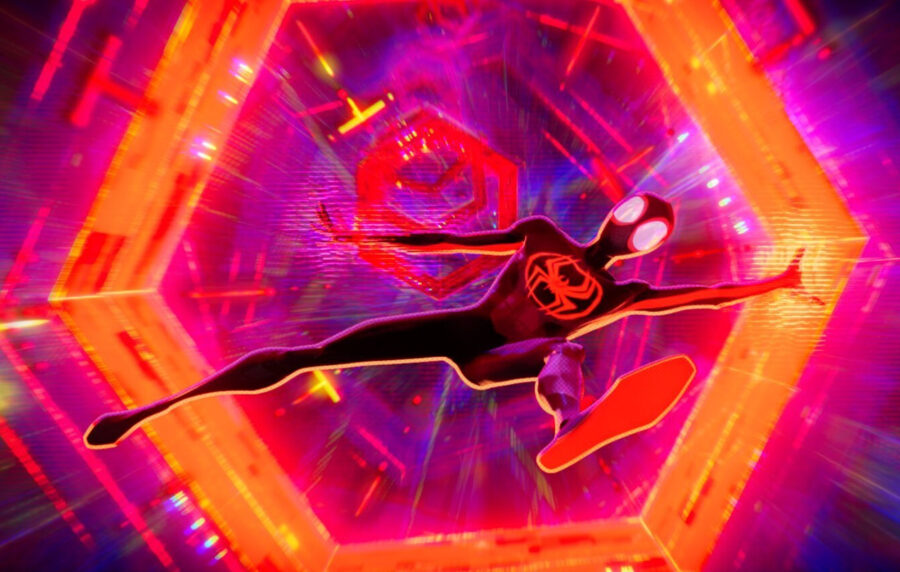

SPIDER-MAN: ACROSS THE SPIDER-VERSE REVIEW SCORE
I think we tend to forget just how crowded with superhero movies the theaters were in 2018, the same year Spider-Man: Into the Spider-Verse was released. That the animated hit managed to so impress audiences that many still call it the best superhero movie of all time — in spite of those audiences being forced to compare it to features like Black Panther and Avengers: Infinity War — makes it that much more impressive. Yet somehow, Spider-Man: Across the Spider-Verse takes the story of Miles Morales and the multiverse of Spider heroes and makes it even better.
The sequel opens on a surprisingly downtrodden note, with Spider-Gwen (Hailee Steinfeld) suffering in silence on Earth-65. We learn the tragic fate of her world’s Peter Parker, and that her father George (Shea Whigham) is hunting her alter-ego. After a battle with a supervillain, Gwen finds the answer to all of her problems in the form of an invitation to an army of Spider heroes from across the multiverse.
Spider-Man: Across the Spider-Verse brings us back to Earth-1610, where Miles Morales (Shameik Moore) is giving us full Peter Parker circa 2004’s Spider-Man 2 vibes. Garbed in a spiffy new costume, Miles is now known throughout New York City as Spider-Man, but it hasn’t made his life any easier. Miles finds it impossible to balance the competing pressures of school, his parents’ expectations, and fighting crime.
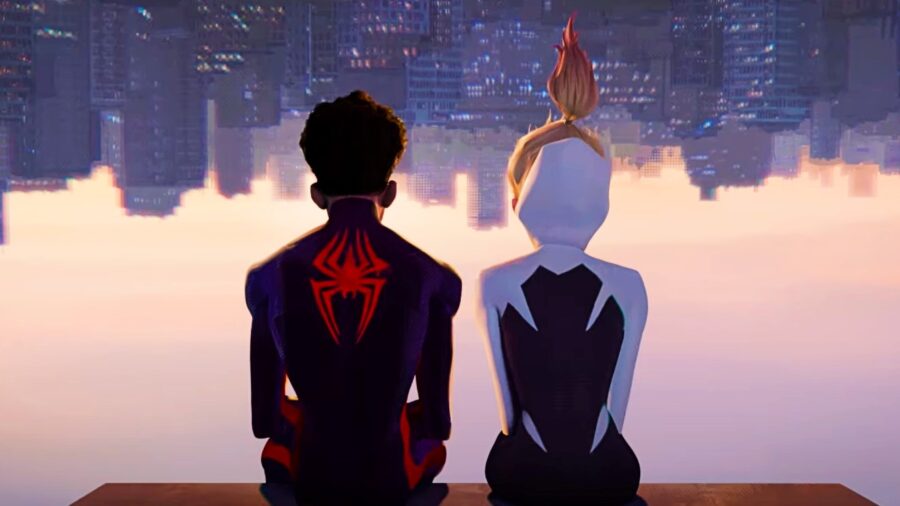
Along with the pleasant surprise of seeing more of Spider-Gwen’s world and history in Spider-Man: Across the Spider-Verse, our stop in Earth-65 gives us a wonderful preview of how stunned we’ll be with the look of the film. Every alternate Earth has its own color palette that creates its own visual hum. When a hero goes to what they think is one world, but proves to be another, all we really need to do is look at the colors all around the web-swinger to realize they’re in the wrong place.
Though Spider-Man: Across the Spider-Verse is just as thrilling and action-packed as its predecessor, it also has a refreshingly less hectic feel. There are more quiet but revealing moments, particularly between Miles and his parents, which are both emotional and often funny. In particular an early exchange between Miles’s father Jefferson (Brian Tyree Henry) and Miles-as-Spider-Man is perfectly touching and hilarious.
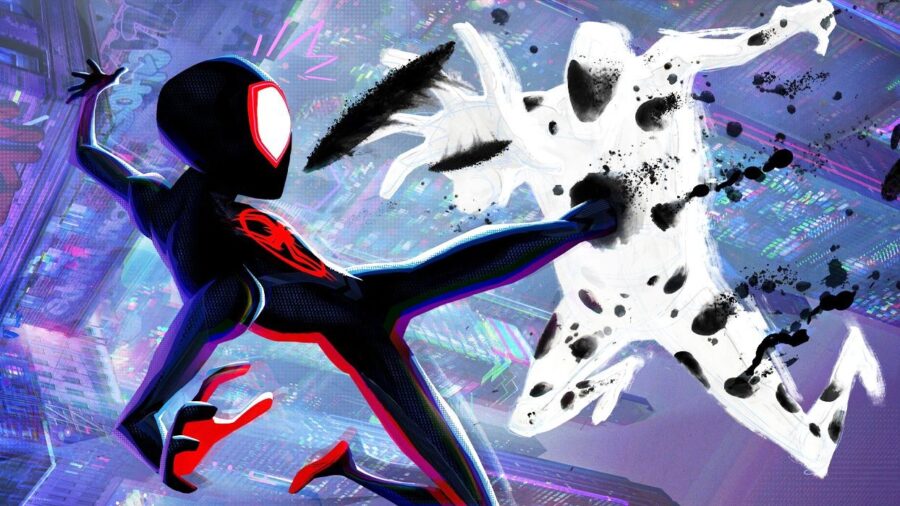
We’re quickly introduced to the initially bumbling villain of Spider-Man: Across the Spider-Verse, The Spot (Jason Schwartzman), who quickly goes from stealing ATMs to messing with the fabric of the multiverse. In the meantime, Miles pines for the only person who can relate to his struggles — Gwen, who is worlds away (until she isn’t).
One crime often leveled at sequels — very much including Spider-Man sequels, most infamously 2007’s Spider-Man 3 — is overstuffing the follow-ups with too many bad guys, but the way Across the Spider-Verse handles its many villains is masterful. While The Spot was advertised as the chief antagonist of the sequel, Miguel O’Hara, aka Spider-Man 2099 (Oscar Isaac), is the real main villain. Traumatized by his past and convinced Miles will unintentionally destroy the multiverse, O’Hara’s zealous passion to stop Miles makes The Spot look like nothing but an overpowered thug.
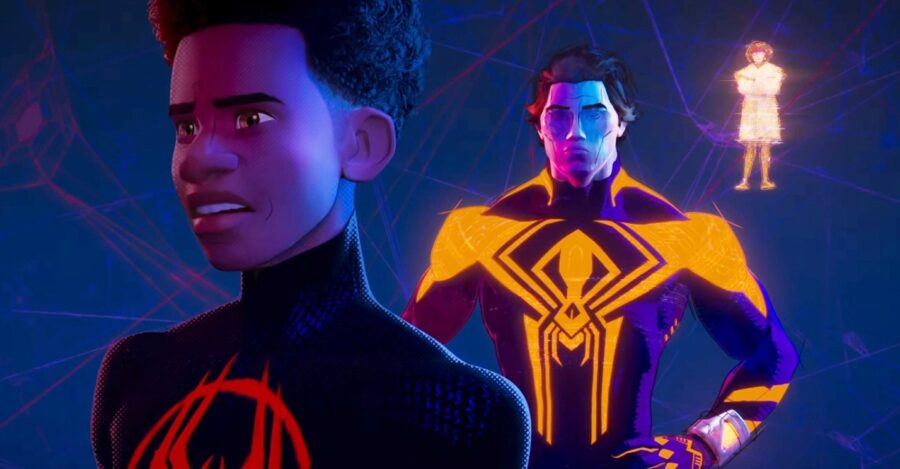
Spider-Man: Across the Spider-Verse (2023)
I don’t want to stray into big spoiler territory, but suffice to say the movie’s villainy doesn’t end with The Spot or Spider-Man 2099.
Of course there is the massive army of variant Spider heroes which is wonderful and dizzying to witness, and for invested comic book geeks like myself is an absolute joy. Really, the only thing that disappoints me about Spider-Man: Across the Spider-Verse is that we have to wait for a home release which will allow me to pause the shots with all the variant Spider folk to hopefully find more I didn’t see the first time. Again, I don’t want to spoil, but for those in the know of some of the more obscure Spidey variants, you will be pleased.
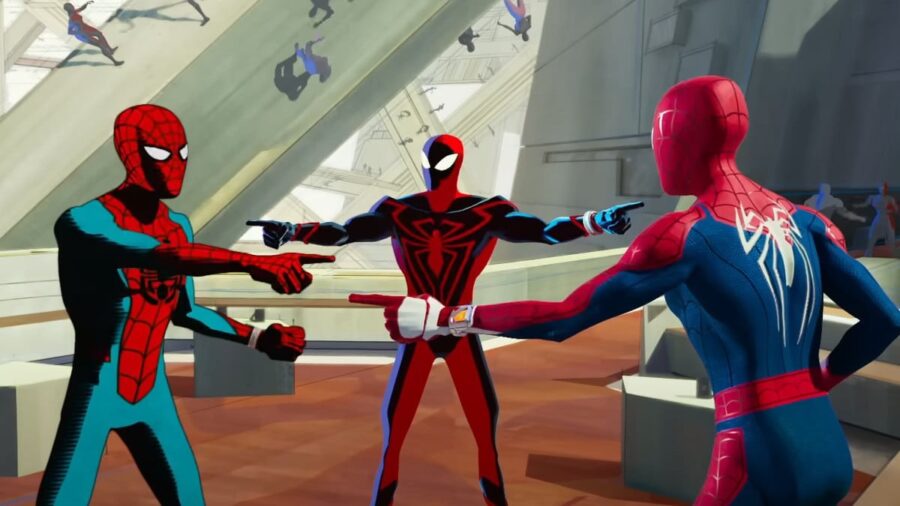
Comic book purists may want to curse me for saying so, but the Across the Spider-Verse re-imaginings of some of these Spider heroes is far superior than the source material. In particular, the costume design of Pavitr Prabhakar, aka Spider-Man India (Karan Soni), is much more interesting and dynamic than that of his comic book counterpart (who pretty much just looks like OG Spider-Man with white pants). Giving Hobie Brown, aka Spider-Punk (Daniel Kaluuya), a cockney accent is an especially nice touch.
Be warned, Spider-Man: Across the Spider-Verse ends on a big cliffhanger, but by the time it hits, you won’t feel cheated or bummed. One of the more masterful aspects of the sequel is that it’s structured to make you feel the big superhero finish, even though you know it isn’t the big superhero finish.
After what seems like far too many disappointing superhero entries from Marvel, DC, and just about everyone stepping into the superhero blockbuster business, Guardians of the Galaxy Vol. 3 and now Spider-Man: Across the Spider-Verse feel like some much needed victories. Now, we just need Marvel and DC to suck not quite so much until next year’s Spider-Man: Beyond the Spider-Verse.












